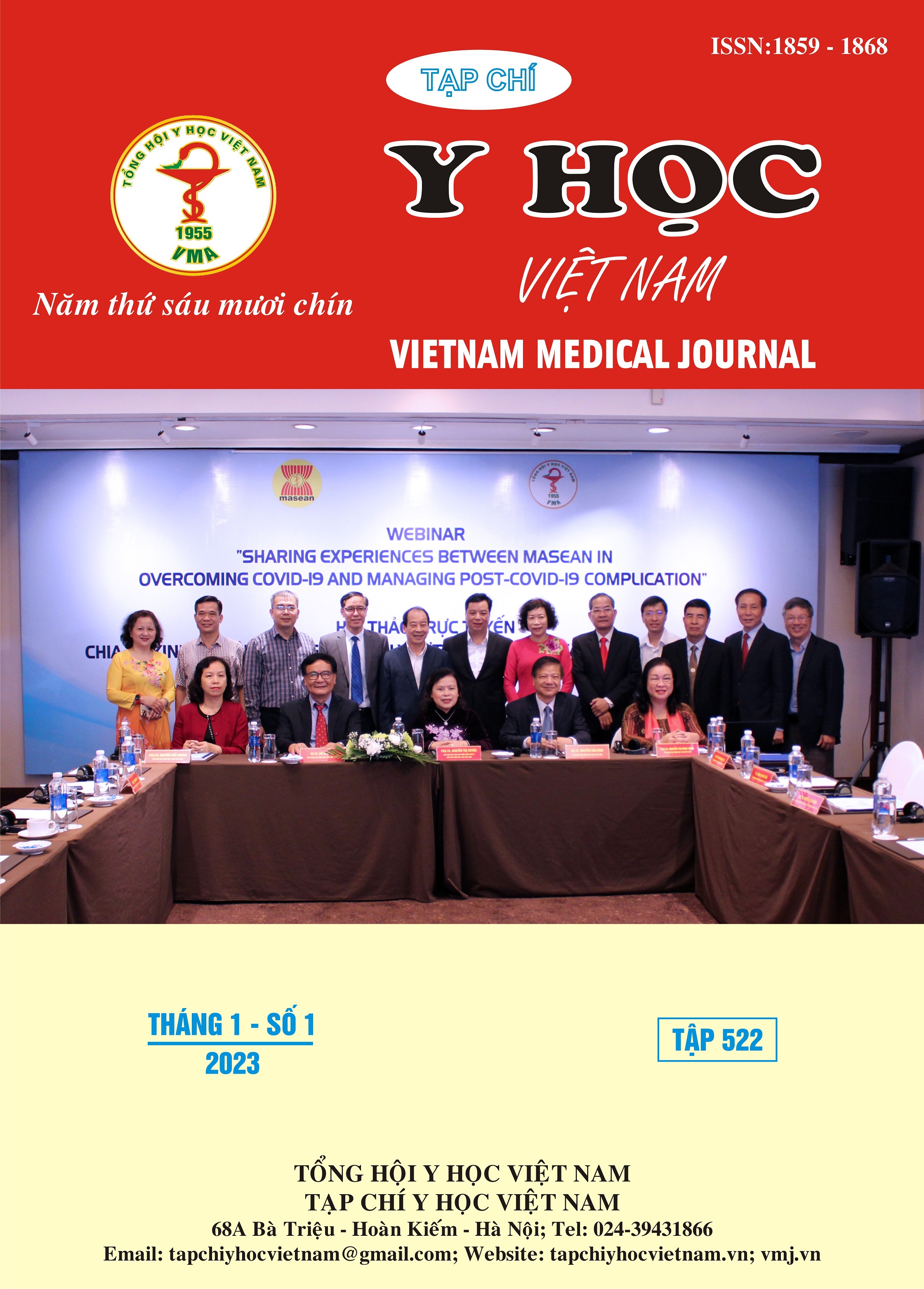ĐÁNH GIÁ KẾT QUẢ CỦA LIỆU PHÁP TẬP TÁC VỤ NHÓM TRONG PHỤC HỒI CHỨC NĂNG ĐI LẠI VÀ THĂNG BẰNG Ở BỆNH NHÂN SAU ĐỘT QUỴ NHỒI MÁU NÃO
Nội dung chính của bài viết
Tóm tắt
Mục tiêu: Để so sánh hiệu quả của liệu pháp tập tác vụ nhóm và liệu pháp điều trị cá nhân trong việc tăng cường khả năng đi lại và thăng bằng trong quá trình hồi phục của người bệnh sau đột quỵ não. Thiết kế nghiên cứu: Can thiệp có đối chứng. Đối tượng nghiên cứu: 41 bệnh nhân sau đột quỵ đang được phục hồi chức năng tại bệnh viện Phục hồi chức năng Hà Nội. Sự can thiệp: Các đối tượng được chia làm nhóm được can thiệp liệu pháp tập tác vụ nhóm (nhóm can thiệp) và can thiệp phục hồi chức năng cá nhân truyền thống (nhóm chứng) trong thời gian nằm viện. Các công cụ đo lường kết quả: Nghiệm pháp đứng dậy và đi (TUG), nghiệm pháp đi bộ 10 mét (10MWT), và thang đo lường khả năng thăng bằng Berg đo lường sau 3 tuần tiếp nhận liệu pháp. Ngoài ra còn đánh giá sự hài lòng của người bệnh bằng cách trả lời câu hỏi. Kết quả: Các đối tượng ở cả 2 nhóm đều có sự tiến bộ giữa thời điểm vào viện và sau 3 tuần can thiệp ở lần đánh giá đầu tiên. Có sự khác biệt có ý nghĩa thống kê giữa hai nhóm về cải thiện thăng bằng với tốc độ đi bộ; điểm BBS; TUG (10MWT trung bình khác biệt, .06m/s; p =0.001; BBS trung bình khác biệt 1.5 điểm, p = 0.005; TUG trung bình khác biệt 1.86, p = 0.008). Kết luận: Liệu pháp tập tác vụ nhóm có hiệu quả tốt hơn với liệu pháp can thiệp cá nhân trong việc phục hồi chức năng sau đột quỵ. Một kết quả khả quan là việc tăng cường khả năng độc lập đi lại và sự hài lòng của bệnh nhân, kết quả này gợi ý một dịch vụ can thiệp trong tương lai
Chi tiết bài viết
Từ khóa
Đột quỵ não, liệu pháp tác vụ nhóm, phục hồi chức năng
Tài liệu tham khảo
2. Ada L, Mackey F, Heard R, Adams R. Stroke rehabilitation: Does the therapy area provide a physical challenge? Aust J Physiother. 1999; 45(1):33-38.
3. Bonini-Rocha AC, de Andrade ALS, Moraes AM, Gomide Matheus LB, Diniz LR, Martins WR. Effectiveness of Circuit-Based Exercises on Gait Speed, Balance, and Functional Mobility in People Affected by Stroke: A Meta-Analysis. PM&R. 2018;10(4):398-409.
4. Edzie EKM, Gorleku PN, Dzefi-Tettey K, et al. Incidence rate and age of onset of first stroke from CT scan examinations in Cape Coast metropolis. Heliyon. 2021;7(2)
5. Mozaffarian D, Benjamin EJ, Go AS, et al. Heart Disease and Stroke Statistics—2016 Update.: 324-4-5.
6. English C, Hillier SL, Lynch EA (2017). Circuit class therapy for improving mobility after stroke. Cochrane Database Syst Rev. 2017;2017(6).
7. English CK, Hillier SL, Stiller KR, Warden-Flood A (2007). Circuit class therapy versus individual physiotherapy sessions during inpatient stroke rehabilitation: a controlled trial. Arch Phys Med Rehabil. 2007;88(8):955-963.
8. Soto-Cámara R, González-Bernal JJ, González-Santos J, Aguilar-Parra JM, Trigueros R, López-Liria R. Age-Related Risk Factors at the First Stroke Event. J Clin Med. 2020; 9(7):2233.


